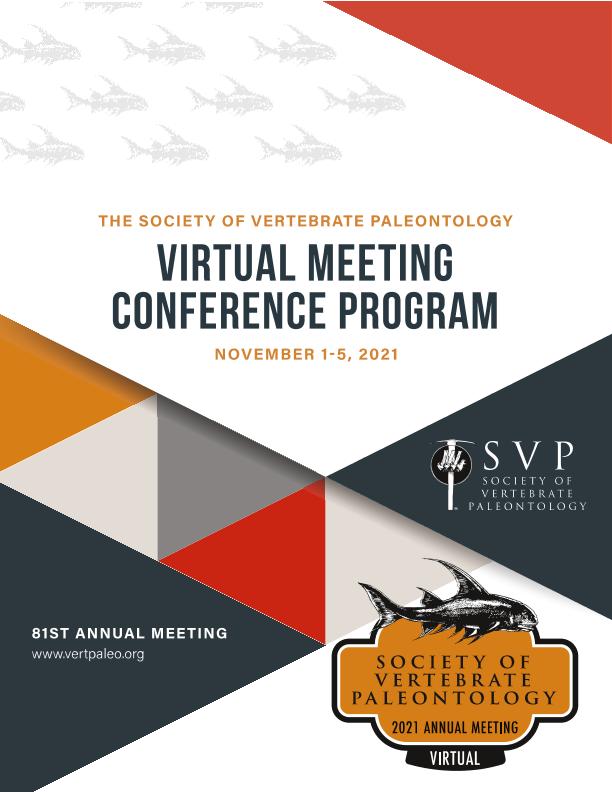Evento
A CT-based revised description and phylogenetic analysis of the skull of the basal maniraptoran Ornitholestes hermanni Osborn 1903
Chapelle, Kimberley E.; Norell, Mark; Ford, David P.; Hendrickx, Christophe ; Radermacher, Viktor J.; Balanoff, Amy; Zanno, Lindsay E.; Choiniere, Jonah N.
; Radermacher, Viktor J.; Balanoff, Amy; Zanno, Lindsay E.; Choiniere, Jonah N.
 ; Radermacher, Viktor J.; Balanoff, Amy; Zanno, Lindsay E.; Choiniere, Jonah N.
; Radermacher, Viktor J.; Balanoff, Amy; Zanno, Lindsay E.; Choiniere, Jonah N.
Tipo del evento:
Reunión
Nombre del evento:
81st Annual Meeting of the Society of Vertebrate Paleontology
Fecha del evento:
01/11/2021
Institución Organizadora:
Society of Vertebrate Paleontology;
Título del Libro:
Conference program of the 81st Annual Meeting of the Society of Vertebrate Paleontology
Editorial:
Society of Vertebrate Paleontology
Idioma:
Inglés
Clasificación temática:
Resumen
Ornitholestes hermanni was one of the first small-bodiedtheropods named in the 1900s. It is known from a singlespecimen discovered during the American MuseumExpedition of 1900, at the Jurassic Morrison Formationsite known as Bone Cabin Quarry, in Wyoming. It haslong been a critical taxon in understanding the evolutionof the Coelurosauria, the clade that includestyrannosauroids, living birds, and their commonancestors. The holotype specimen comprises a nearlycomplete skull and most of a postcranial skeleton. Despitethis abundant material, its precise phylogeneticrelationships have been difficult to determine. This is inpart due to the intense mediolateral crushing of the skulland the relatively generalized postcranial anatomy. Herewe present the results of a micro- computed tomographybasedinvestigation of the cranial anatomy and subsequentincorporation of these data into a phylogenetic data matrixdesigned to test coelurosaurian interrelationships. We findrobust evidence across different optimality criteria thatOrnitholestes is the earliest-branching oviraptorosaurianspecies. Using parsimony as an optimality criterion, thisphylogenetic position is supported by 14 unambiguoussynapomorphies, including: a short frontal process of thepostorbital; short, deep, and pendant paroccipitalprocesses; a large mandibular foramen; an anterodorsallyoriented dentary symphysis; a surangular that is longerthan the dentary; short maxillary and dentary tooth rows;and procumbent dentary and premaxillary teeth. UsingBayesian fossilized birth-death models, we find highposterior probabilities (>.99) that Ornitholestes is theearliest-branching oviraptorosaurian species. Weadditionally find strong support in both analyses that thesuperficially bat-like and possibly arborealscansoriopterygids are an early branching lineage withinOviraptorosauria. This new phylogenetic position fills in apersistent ghost lineage in Oviraptorosauria and confirmsthat scansoriopterygids are basally branchingoviraptorosaurians that represent an independent origin ofaerial habits, separate from those of dromaeosaurs andavialans.
Palabras clave:
Ornitholestes
,
Oviraptorosauria
,
Theropoda
Archivos asociados
Licencia
Identificadores
Colecciones
Eventos(UEL)
Eventos de UNIDAD EJECUTORA LILLO
Eventos de UNIDAD EJECUTORA LILLO
Citación
A CT-based revised description and phylogenetic analysis of the skull of the basal maniraptoran Ornitholestes hermanni Osborn 1903; 81st Annual Meeting of the Society of Vertebrate Paleontology; Mc Lean; Estados Unidos; 2021; 82-82
Compartir



